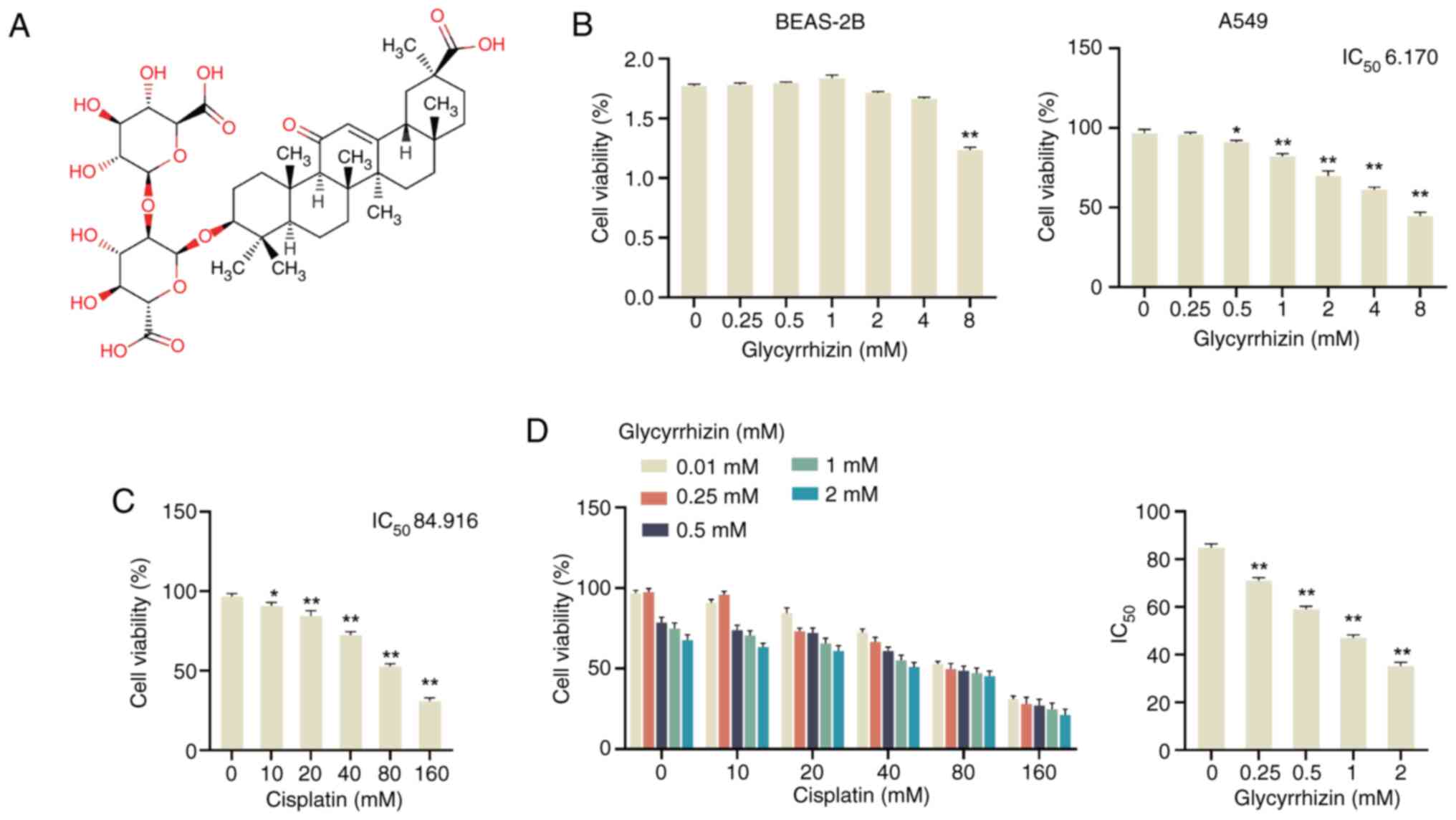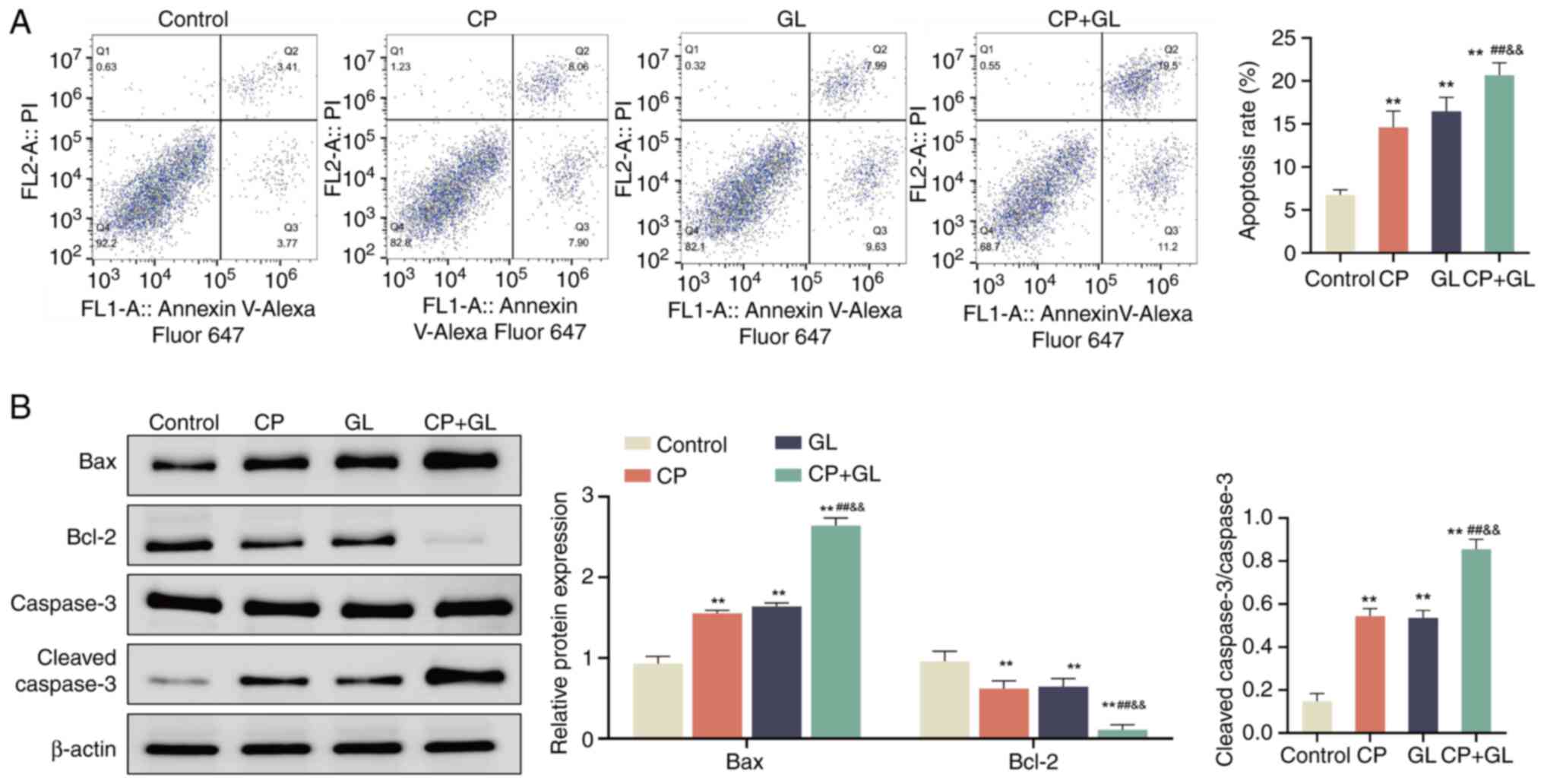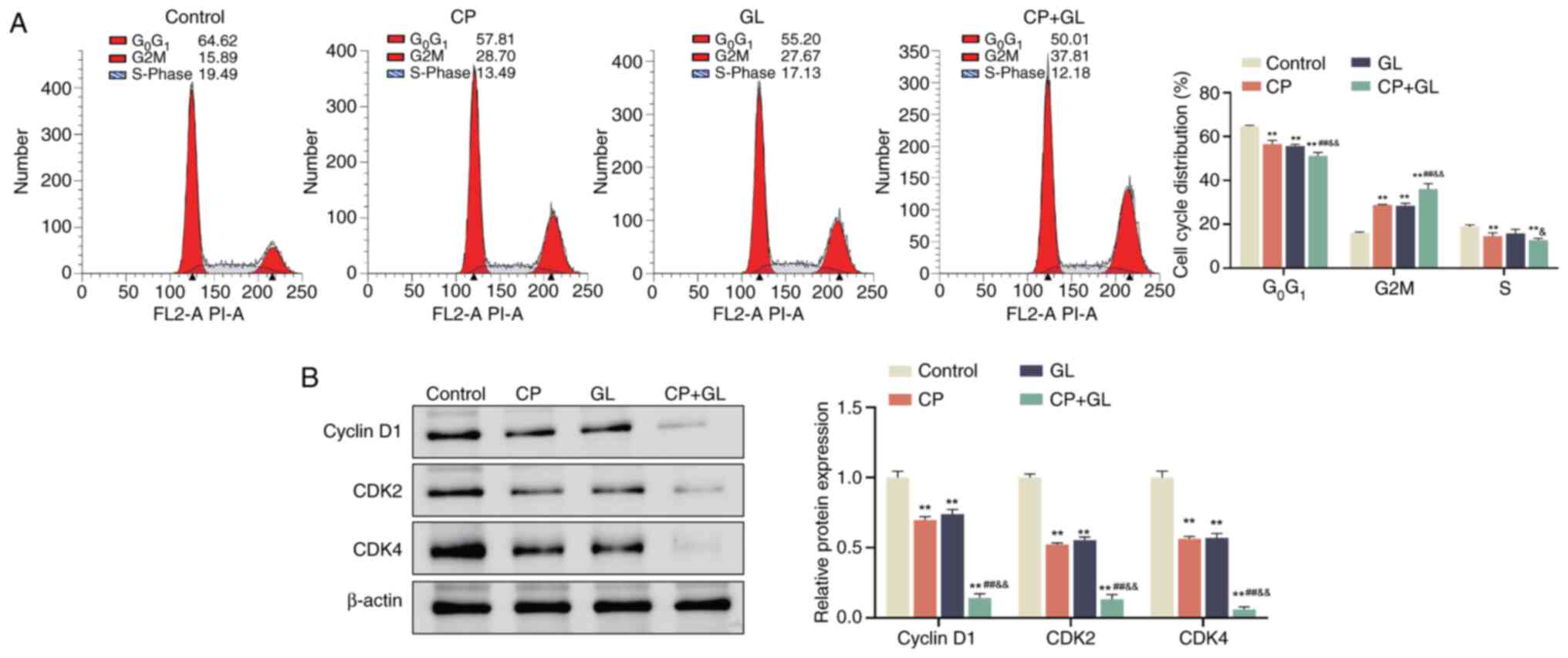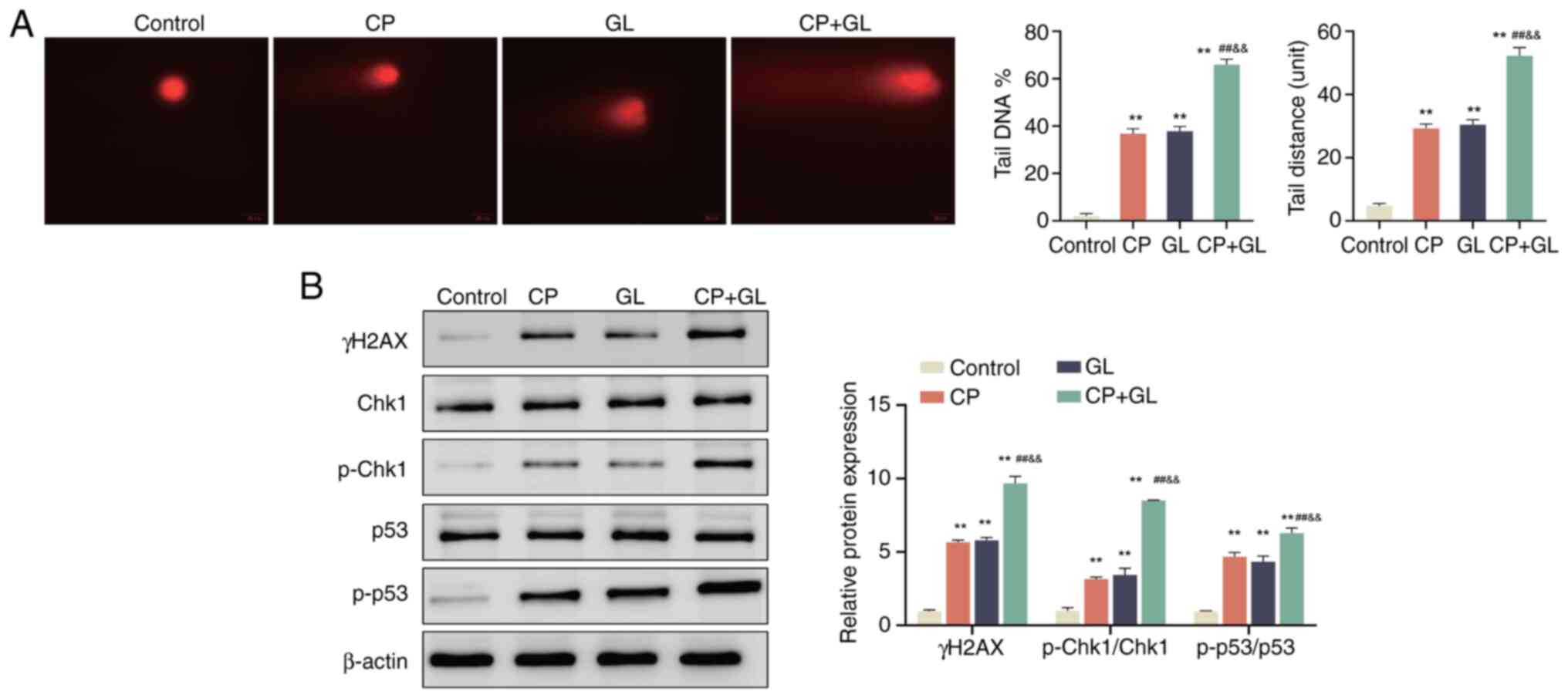|
1
|
Chen P, Liu Y, Wen Y and Zhou C: Non-small
cell lung cancer in China. Cancer Commun (Lond). 42:937–970. 2022.
View Article : Google Scholar : PubMed/NCBI
|
|
2
|
Duma N, Santana-Davila R and Molina JR:
Non-small cell lung cancer: Epidemiology, screening, diagnosis, and
treatment. Mayo Clin Proc. 94:1623–1640. 2019. View Article : Google Scholar : PubMed/NCBI
|
|
3
|
Miao D, Zhao J, Han Y, Zhou J, Li X, Zhang
T, Li W and Xia Y: Management of locally advanced non-small cell
lung cancer: State of the art and future directions. Cancer Commun
(Lond). 44:23–46. 2024. View Article : Google Scholar : PubMed/NCBI
|
|
4
|
Herbst RS, Morgensztern D and Boshoff C:
The biology and management of non-small cell lung cancer. Nature.
553:446–454. 2018. View Article : Google Scholar : PubMed/NCBI
|
|
5
|
Hendriks LEL, Remon J, Faivre-Finn C,
Garassino MC, Heymach JV, Kerr KM, Tan DSW, Veronesi G and Reck M:
Non-small-cell lung cancer. Nat Rev Dis Primers. 10:712024.
View Article : Google Scholar : PubMed/NCBI
|
|
6
|
Xu J and Gewirtz DA: Is autophagy always a
barrier to cisplatin therapy? Biomolecules. 12:4632022. View Article : Google Scholar : PubMed/NCBI
|
|
7
|
Dasari S, Njiki S, Mbemi A, Yedjou CG and
Tchounwou PB: Pharmacological effects of cisplatin combination with
natural products in cancer chemotherapy. Int J Mol Sci.
23:15322022. View Article : Google Scholar : PubMed/NCBI
|
|
8
|
Qi L, Luo Q, Zhang Y, Jia F, Zhao Y and
Wang F: Advances in toxicological research of the anticancer drug
cisplatin. Chem Res Toxicol. 32:1469–1486. 2019. View Article : Google Scholar : PubMed/NCBI
|
|
9
|
Sun C, Gao W, Liu J, Cheng H and Hao J:
FGL1 regulates acquired resistance to Gefitinib by inhibiting
apoptosis in non-small cell lung cancer. Respir Res. 21:2102020.
View Article : Google Scholar : PubMed/NCBI
|
|
10
|
Gui YR, Zhang Y, Wang XQ, Fan BJ, Li JL,
Zhang LX, Fan F, Cao KD, Zhang XG and Hou W: Treatment of lung
cancer with orally administered Chinese herbal medicine: An
evidence map between 1970–2020. Chin J Integr Med. 28:930–938.
2022. View Article : Google Scholar : PubMed/NCBI
|
|
11
|
Singh M, Sharma P, Singh PK, Singh TG and
Saini B: Medicinal potential of heterocyclic compounds from diverse
natural sources for the management of cancer. Mini Rev Med Chem.
20:942–957. 2020. View Article : Google Scholar : PubMed/NCBI
|
|
12
|
Masraksa W, Tanasawet S, Hutamekalin P,
Wongtawatchai T and Sukketsiri W: Luteolin attenuates migration and
invasion of lung cancer cells via suppressing focal adhesion kinase
and non-receptor tyrosine kinase signaling pathway. Nutr Res Pract.
14:127–133. 2020. View Article : Google Scholar : PubMed/NCBI
|
|
13
|
Kalaiarasi A, Anusha C, Sankar R,
Rajasekaran S, John Marshal J, Muthusamy K and Ravikumar V: Plant
isoquinoline alkaloid berberine exhibits chromatin remodeling by
modulation of histone deacetylase to induce growth arrest and
apoptosis in the A549 cell line. J Agric Food Chem. 64:9542–9550.
2016. View Article : Google Scholar : PubMed/NCBI
|
|
14
|
Deng QD, Lei XP, Zhong YH, Chen MS, Ke YY,
Li Z, Chen J, Huang LJ, Zhang Y, Liang L, et al: Triptolide
suppresses the growth and metastasis of non-small cell lung cancer
by inhibiting β-catenin-mediated epithelial-mesenchymal transition.
Acta Pharmacol Sin. 42:1486–1497. 2021. View Article : Google Scholar : PubMed/NCBI
|
|
15
|
Wei Z, Chen J, Zuo F, Guo J, Sun X, Liu D
and Liu C: Traditional Chinese medicine has great potential as
candidate drugs for lung cancer: A review. J Ethnopharmacol.
300:1157482023. View Article : Google Scholar : PubMed/NCBI
|
|
16
|
Zhang Y, Yan S, Li Y, Zhang J, Luo Y, Li
P, Yang Y, Li Y, Huang Y and Wang E: Inhibin βA is an independent
prognostic factor that promotes invasion via Hippo signaling in
non-small cell lung cancer. Mol Med Rep. 24:7892021. View Article : Google Scholar : PubMed/NCBI
|
|
17
|
Zhang J, Li C, Zhang L, Heng Y, Xu T,
Zhang Y, Chen X, Hoffman RM and Jia L: Andrographolide induces
noxa-dependent apoptosis by transactivating ATF4 in human lung
adenocarcinoma cells. Front Pharmacol. 12:6805892021. View Article : Google Scholar : PubMed/NCBI
|
|
18
|
Wang Q, Jiao L, Wang S, Chen P, Bi L, Zhou
D, Yao J, Li J, Wang L, Chen Z, et al: Adjuvant chemotherapy with
Chinese herbal medicine formulas versus placebo in patients with
lung adenocarcinoma after radical surgery: A multicenter,
randomized, double-blind, placebo-controlled trial. Biol Proced
Online. 22:52020. View Article : Google Scholar : PubMed/NCBI
|
|
19
|
Chrzanowski J, Chrzanowska A and Graboń W:
Glycyrrhizin: An old weapon against a novel coronavirus. Phytother
Res. 35:629–636. 2021. View
Article : Google Scholar : PubMed/NCBI
|
|
20
|
Bravo V, Serrano M, Duque A, Ferragud J
and Coronado PJ: Glycyrrhizinic acid as an antiviral and anticancer
agent in the treatment of human papillomavirus. J Pers Med.
13:16392023. View Article : Google Scholar : PubMed/NCBI
|
|
21
|
Han Y, Sheng W, Liu X, Liu H, Jia X, Li H,
Wang C, Wang B, Hu T and Ma Y: Glycyrrhizin ameliorates colorectal
cancer progression by regulating NHEJ pathway through inhibiting
HMGB1-induced DNA damage response. Sci Rep. 14:249482024.
View Article : Google Scholar : PubMed/NCBI
|
|
22
|
Jain R, Hussein MA, Pierce S, Martens C,
Shahagadkar P and Munirathinam G: Oncopreventive and
oncotherapeutic potential of licorice triterpenoid compound
glycyrrhizin and its derivatives: Molecular insights. Pharmacol
Res. 178:1061382022. View Article : Google Scholar : PubMed/NCBI
|
|
23
|
Zhang Y, Sheng Z, Xiao J, Li Y, Huang J,
Jia J, Zeng X and Li L: Advances in the roles of glycyrrhizic acid
in cancer therapy. Front Pharmacol. 14:12651722023. View Article : Google Scholar : PubMed/NCBI
|
|
24
|
Wang H, Ge X, Qu H, Wang N, Zhou J, Xu W,
Xie J, Zhou Y, Shi L, Qin Z, et al: Glycyrrhizic acid inhibits
proliferation of gastric cancer cells by inducing cell cycle arrest
and apoptosis. Cancer Manag Res. 12:2853–2861. 2020. View Article : Google Scholar : PubMed/NCBI
|
|
25
|
Huang RY, Chu YL, Jiang ZB, Chen XM, Zhang
X and Zeng X: Glycyrrhizin suppresses lung adenocarcinoma cell
growth through inhibition of thromboxane synthase. Cell Physiol
Biochem. 33:375–388. 2014. View Article : Google Scholar : PubMed/NCBI
|
|
26
|
Deng QP, Wang MJ, Zeng X, Chen GG and
Huang RY: Effects of glycyrrhizin in a mouse model of lung
adenocarcinoma. Cell Physiol Biochem. 41:1383–1392. 2017.
View Article : Google Scholar : PubMed/NCBI
|
|
27
|
Huan C, Xu Y, Zhang W, Guo T, Pan H and
Gao S: Research progress on the antiviral activity of glycyrrhizin
and its derivatives in liquorice. Front Pharmacol. 12:6806742021.
View Article : Google Scholar : PubMed/NCBI
|
|
28
|
Wakamatsu T, Nakahashi Y, Hachimine D,
Seki T and Okazaki K: The combination of glycyrrhizin and
lamivudine can reverse the cisplatin resistance in hepatocellular
carcinoma cells through inhibition of multidrug
resistance-associated proteins. Int J Oncol. 31:1465–1472.
2007.PubMed/NCBI
|
|
29
|
Tan JY, Zhao F, Deng SX, Zhu HC, Gong Y
and Wang W: Glycyrrhizin affects monocyte migration and apoptosis
by blocking HMGB1 signaling. Mol Med Rep. 17:5970–5975.
2018.PubMed/NCBI
|
|
30
|
Ahmad A, Tiwari RK, Saeed M, Ahmad I and
Ansari IA: Glycyrrhizin mediates downregulation of notch pathway
resulting in initiation of apoptosis and disruption in the cell
cycle progression in cervical cancer cells. Nutr Cancer.
74:622–639. 2022. View Article : Google Scholar : PubMed/NCBI
|
|
31
|
Thirugnanam S, Xu L, Ramaswamy K and
Gnanasekar M: Glycyrrhizin induces apoptosis in prostate cancer
cell lines DU-145 and LNCaP. Oncol Rep. 20:1387–1392.
2008.PubMed/NCBI
|
|
32
|
Sun Y, Liu Y, Ma X and Hu H: The influence
of cell cycle regulation on chemotherapy. Int J Mol Sci.
22:69232021. View Article : Google Scholar : PubMed/NCBI
|
|
33
|
Carneiro BA and El-Deiry WS: Targeting
apoptosis in cancer therapy. Nat Rev Clin Oncol. 17:395–417. 2020.
View Article : Google Scholar : PubMed/NCBI
|
|
34
|
Ferlay J, Colombet M, Soerjomataram I,
Parkin DM, Piñeros M, Znaor A and Bray F: Cancer statistics for the
year 2020: An overview. Int J Cancer. Apr 5–2021.(Epub ahead of
print). View Article : Google Scholar
|
|
35
|
Ettinger DS, Wood DE, Aisner DL, Akerley
W, Bauman JR, Bharat A, Bruno DS, Chang JY, Chirieac LR, D'Amico
TA, et al: NCCN guidelines insights: Non-small cell lung cancer,
version 2.2021. J Natl Compr Canc Netw. 19:254–266. 2021.
View Article : Google Scholar : PubMed/NCBI
|
|
36
|
Yan H, Jiang M, Yang F, Tang X, Lin M,
Zhou C, Tan Y and Liu D: Ajuforrestin A, an abietane diterpenoid
from Ajuga ovalifolia var. calanthe, induces A549 cell apoptosis by
targeting SHP2. Molecules. 27:54692022. View Article : Google Scholar : PubMed/NCBI
|
|
37
|
Roohbakhsh A, Iranshahy M and Iranshahi M:
Glycyrrhetinic acid and its derivatives: Anti-cancer and cancer
chemopreventive properties, mechanisms of action and
structure-cytotoxic activity relationship. Curr Med Chem.
23:498–517. 2016. View Article : Google Scholar : PubMed/NCBI
|
|
38
|
Bi YY, Chen Q, Yang MY, Xing L and Jiang
HL: Nanoparticles targeting mutant p53 overcome chemoresistance and
tumor recurrence in non-small cell lung cancer. Nat Commun.
15:27592024. View Article : Google Scholar : PubMed/NCBI
|
|
39
|
Li F, Zheng Z, Chen W, Li D, Zhang H, Zhu
Y, Mo Q, Zhao X, Fan Q, Deng F, et al: Regulation of cisplatin
resistance in bladder cancer by epigenetic mechanisms. Drug Resist
Updat. 68:1009382023. View Article : Google Scholar : PubMed/NCBI
|
|
40
|
Su X, Wu L, Hu M, Dong W, Xu M and Zhang
P: Glycyrrhizic acid: A promising carrier material for anticancer
therapy. Biomed Pharmacother. 95:670–678. 2017. View Article : Google Scholar : PubMed/NCBI
|
|
41
|
Chen L, Yang J, Davey AK, Chen YX, Wang JP
and Liu XQ: Effects of diammonium glycyrrhizinate on the
pharmacokinetics of aconitine in rats and the potential mechanism.
Xenobiotica. 39:955–963. 2009. View Article : Google Scholar : PubMed/NCBI
|
|
42
|
Romani AMP: Cisplatin in cancer treatment.
Biochem Pharmacol. 206:1153232022. View Article : Google Scholar : PubMed/NCBI
|
|
43
|
Tsai JJ, Pan PJ, Hsu FT, Chung JG and
Chiang IT: Glycyrrhizic acid modulates apoptosis through
extrinsic/intrinsic pathways and inhibits protein kinase B- and
extracellular signal-regulated kinase-mediated metastatic potential
in hepatocellular carcinoma in vitro and in vivo. Am J Chin Med.
48:223–244. 2020. View Article : Google Scholar : PubMed/NCBI
|
|
44
|
Cao R, Li Y, Hu X, Qiu Y, Li S, Xie Y, Xu
C, Lu C, Chen G and Yang J: Glycyrrhizic acid improves
tacrolimus-induced renal injury by regulating autophagy. FASEB J.
37:e227492023. View Article : Google Scholar : PubMed/NCBI
|
|
45
|
Wang Y, Wang L, Luo R, Sun Y, Zou M, Wang
T, Guo Q and Peng X: Glycyrrhizic acid against mycoplasma
gallisepticum-induced inflammation and apoptosis through
suppressing the MAPK pathway in chickens. J Agric Food Chem.
70:1996–2009. 2022. View Article : Google Scholar : PubMed/NCBI
|
|
46
|
Liang B, Guo XL, Jin J, Ma YC and Feng ZQ:
Glycyrrhizic acid inhibits apoptosis and fibrosis in
carbon-tetrachloride-induced rat liver injury. World J
Gastroenterol. 21:5271–5280. 2015. View Article : Google Scholar : PubMed/NCBI
|
|
47
|
Azzahra SNA, Hanif N and Hermawan A: MDM2
is a potential target gene of glycyrrhizic acid for circumventing
breast cancer resistance to tamoxifen: Integrative bioinformatics
analysis. Asian Pac J Cancer Prev. 23:2341–2350. 2022. View Article : Google Scholar : PubMed/NCBI
|
|
48
|
Bentz GL, Lowrey AJ, Horne DC, Nguyen V,
Satterfield AR, Ross TD, Harrod AE, Uchakina ON and McKallip RJ:
Using glycyrrhizic acid to target sumoylation processes during
Epstein-Barr virus latency. PLoS One. 14:e02175782019. View Article : Google Scholar : PubMed/NCBI
|
|
49
|
Slovin S, Carissimo A, Panariello F,
Grimaldi A, Bouché V, Gambardella G and Cacchiarelli D: Single-cell
RNA sequencing analysis: A step-by-step overview. Methods Mol Biol.
2284:343–365. 2021. View Article : Google Scholar : PubMed/NCBI
|
|
50
|
Wei C and Fu Q: Cell death mediated by
nanotechnology via the cuproptosis pathway: A novel horizon for
cancer therapy. View. 4:202300012023. View Article : Google Scholar
|
|
51
|
Zhou J, Kang Y, Chen L, Wang H, Liu J,
Zeng S and Yu L: The drug-resistance mechanisms of five
platinum-based antitumor agents. Front Pharmacol. 11:3432020.
View Article : Google Scholar : PubMed/NCBI
|
|
52
|
Yang L, Liu YN, Gu Y and Guo Q: Deltonin
enhances gastric carcinoma cell apoptosis and chemosensitivity to
cisplatin via inhibiting PI3K/AKT/mTOR and MAPK signaling. World J
Gastrointest Oncol. 15:1739–1755. 2023. View Article : Google Scholar : PubMed/NCBI
|
|
53
|
Zhang J, Zhou Q, Xie K, Cheng L, Peng S,
Xie R, Liu L, Zhang Y, Dong W, Han J, et al: Targeting WD repeat
domain 5 enhances chemosensitivity and inhibits proliferation and
programmed death-ligand 1 expression in bladder cancer. J Exp Clin
Cancer Res. 40:2032021. View Article : Google Scholar : PubMed/NCBI
|
|
54
|
Yang Y, Yang Z, Zhang R, Jia C, Mao R,
Mahati S, Zhang Y, Wu G, Sun YN, Jia XY, et al: MiR-27a-3p enhances
the cisplatin sensitivity in hepatocellular carcinoma cells through
inhibiting PI3K/Akt pathway. Biosci Rep. 41:BSR201920072021.
View Article : Google Scholar : PubMed/NCBI
|
|
55
|
Li H, Wen X, Ren Y, Fan Z, Zhang J, He G
and Fu L: Targeting PI3K family with small-molecule inhibitors in
cancer therapy: Current clinical status and future directions. Mol
Cancer. 23:1642024. View Article : Google Scholar : PubMed/NCBI
|
|
56
|
Omidi F, Shahbazi S, Reiisi S, Azhdari S
and Karimzadeh MR: Glycyrrhizic acid enhances the anticancer
activity of cisplatin in the human ovarian cancer cell line.
Toxicol In Vitro. 93:1056872023. View Article : Google Scholar : PubMed/NCBI
|
|
57
|
Chueh FS, Hsiao YT, Chang SJ, Wu PP, Yang
JS, Lin JJ, Chung JG and Lai TY: Glycyrrhizic acid induces
apoptosis in WEHI-3 mouse leukemia cells through the caspase- and
mitochondria-dependent pathways. Oncol Rep. 28:2069–2076. 2012.
View Article : Google Scholar : PubMed/NCBI
|















